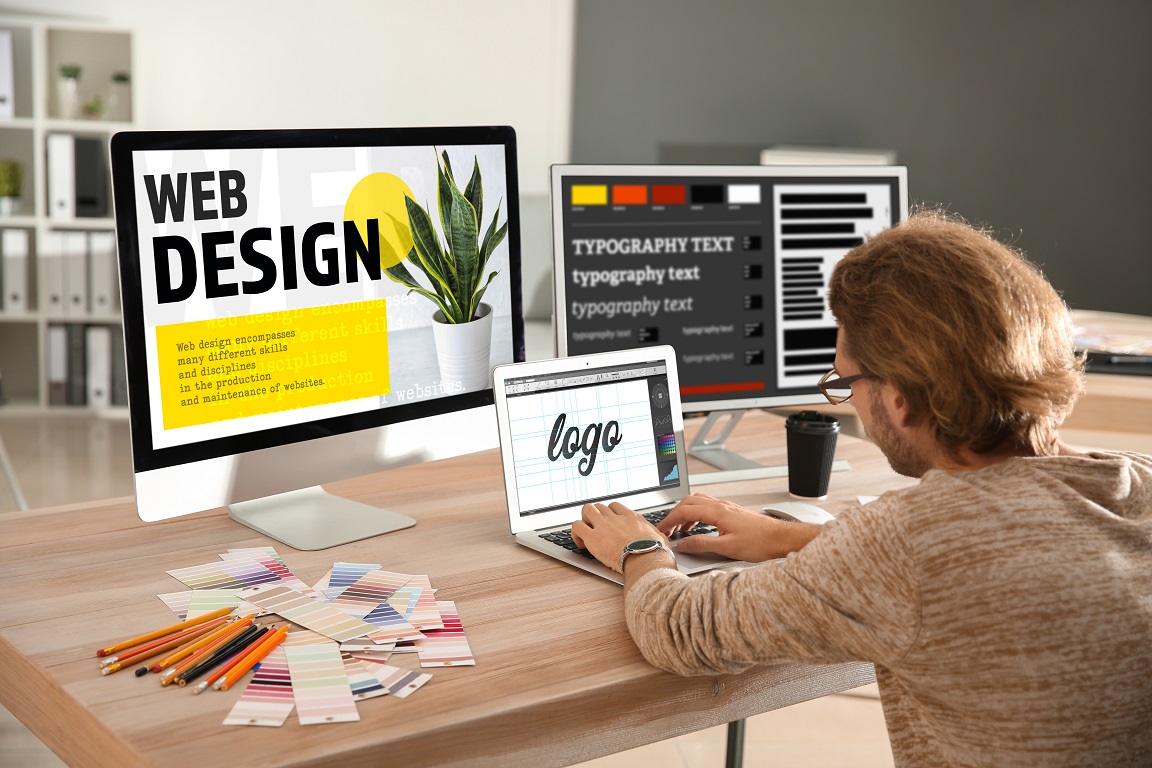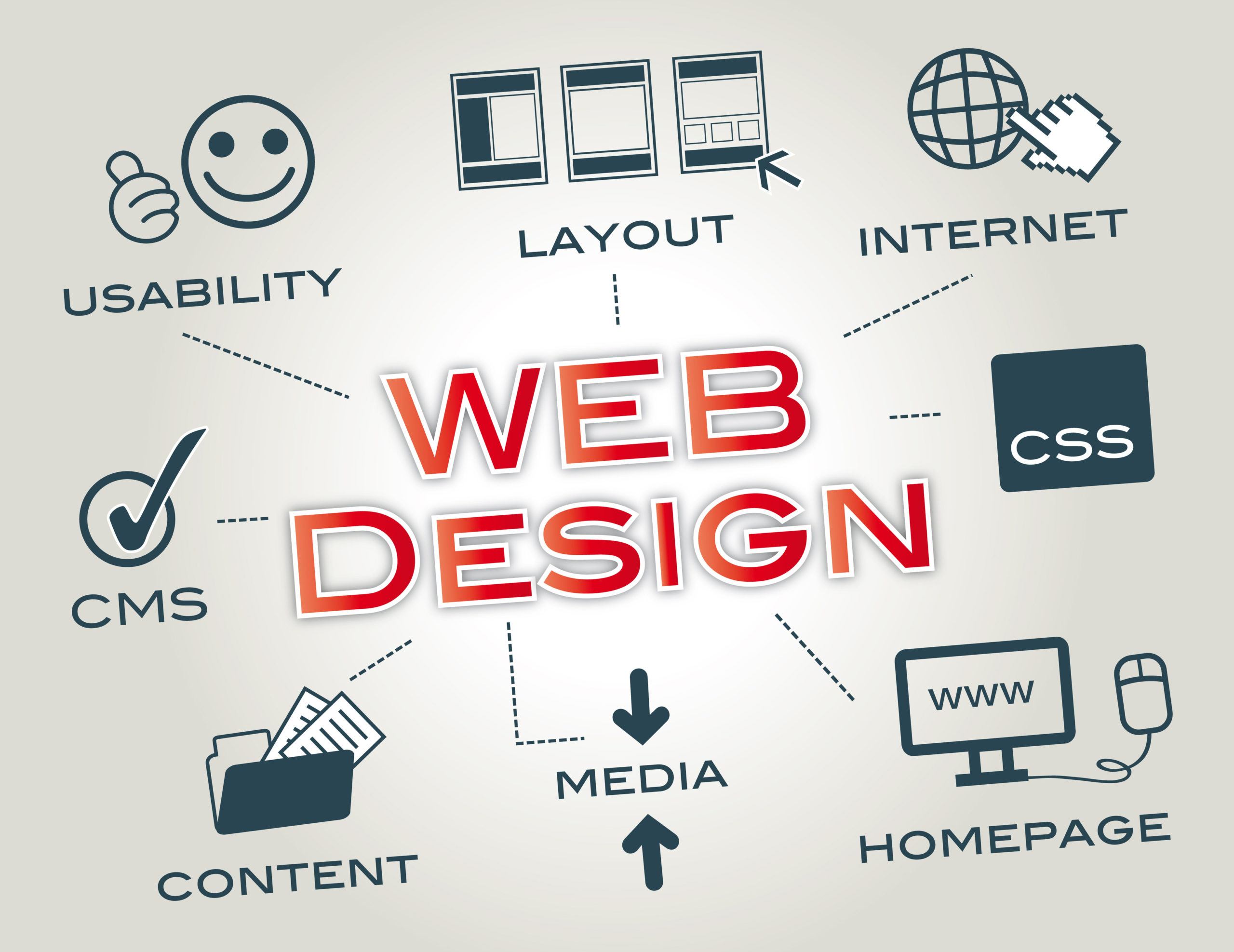The Relevance of User Experience in Reliable Web Design Strategies
User experience (UX) offers as a cornerstone in effective web design strategies. It shapes just how users communicate with a website, affecting their complete satisfaction and probability of returning. A properly designed UX can boost interaction with user-friendly navigation and responsive layouts. Forgeting these aspects might lead to stress and raised bounce rates. Understanding the complexities of UX is important for developers aiming to produce compelling electronic experiences that reverberate with varied audiences. What aspects genuinely drive successful user engagement?
Understanding User Experience and Its Influence On Design
User experience (UX) is frequently perceived as a plain aspect of web design, it essentially forms just how users connect with a web site. UX encompasses all facets of the user's communication, including usability, ease of access, and general fulfillment. A favorable UX cultivates engagement, motivating customers to explore the site and return in the future. Alternatively, an adverse experience can bring about irritation, causing high bounce rates and shed chances for conversion.
Style aspects like web content, navigation, and design company play important duties fit this experience. Effective UX layout prepares for user requirements and preferences, making certain that information is aesthetically appealing and quickly obtainable. Furthermore, recognizing user actions with analytics can provide beneficial insights, notifying layout choices that improve usability. Eventually, a thorough understanding of UX allows developers to create web sites that not just bring in customers but likewise promote purposeful communications that line up with organization objectives and user assumptions.
Secret Principles of Efficient User Experience
Effective user experience pivots on numerous vital concepts that boost internet site capability and interaction. User-friendly navigating design, receptive layout essentials, and the value of aesthetic pecking order are essential aspects that add to a seamless communication in between individuals and internet material. Recognizing these concepts permits designers to develop even more easy to use and available digital atmospheres.
Intuitive Navigating Layout
Instinctive navigation layout offers as a vital entrance to their total experience when users encounter a web site. Efficient navigation enables customers to effortlessly find the info they look for, enhancing their interaction with the website. Key principles include clear labeling, sensible company, and consistent positioning of navigation elements. Labels ought to be simple, allowing customers to anticipate the web content they will discover. A well-structured hierarchy aids customers recognize the partnership in between various sections, leading them via the website perfectly. Furthermore, receptive food selections and easily accessible links add to a fluid experience across gadgets. By focusing on user-friendly navigation, designers can substantially reduce user irritation and increase engagement, eventually cultivating a positive perception of the website and its material.
Receptive Design Essentials
A well-structured navigating system normally brings about the need for a receptive layout, which is crucial in today's varied digital landscape. A responsive design guarantees that websites feature effortlessly throughout various tools, including mobile phones, desktops, and tablet computers. This versatility boosts user experience by permitting web content to be visually coherent and conveniently available, no matter screen dimension. Key principles of receptive style include liquid grids, flexible photos, and media questions, which facilitate suitable watching. In addition, focusing on touch-friendly elements enhances communication on mobile devices. By carrying out a responsive layout, designers can fit individuals' requirements, lessen bounce rates, and boost engagement. Ultimately, a well-executed receptive layout promotes a positive user experience, encouraging site visitors to discover the site additionally.
Aesthetic Power Structure Relevance
Aesthetic hierarchy plays an important function in assisting customers via a site, ensuring that crucial information records their interest initially. By tactically utilizing size, spacing, shade, and contrast, developers can create a clear path for users to comply with. Larger aspects typically draw the eye, showing their significance, while contrasting colors can highlight phone call to action. Furthermore, regular placement and grouping of related material improve understanding, making navigating user-friendly. Efficient use aesthetic power structure not only boosts use yet additionally sustains the overall aesthetic of the website, cultivating a positive user experience. When individuals can conveniently determine the most critical information, they are a lot more most likely to engage with the content, causing raised complete satisfaction and communication with the site.
The Role of Usability in Web Design
Functionality plays a vital role in web design, specifically with navigating simplicity and adherence to access standards. Effective navigation improves user contentment by enabling site visitors to discover info promptly and intuitively. Meanwhile, conference accessibility requirements guarantees that all users, regardless of their capabilities, can efficiently interact with the website.
Navigation Simplicity
Simplicity in navigation stands as a cornerstone of reliable web design, substantially influencing user experience. A streamlined navigating system allows customers to discover information rapidly and without effort, minimizing stress and improving fulfillment. Clear labeling and sensible structure are crucial components, leading customers easily through the site. Repetitive web links or excessively complicated food selections can confuse individuals, bring about boosted bounce prices. Additionally, mobile responsiveness has to be considered, ensuring navigation continues to be uncomplicated across devices. Decreasing and prioritizing necessary pages clutter better sustains user involvement. Effective navigating not just cultivates a positive experience but additionally encourages customers to explore the website much more completely, ultimately causing higher conversion rates. Hereof, navigating simpleness works as an essential variable in the general efficiency of web design methods.
Ease of access Standards
User engagement is significantly boosted when web sites follow availability standards, making certain that all users, no matter of their capabilities, can browse and communicate efficiently. Compliance with these requirements not just expands the audience however also enhances overall user contentment. Accessible style incorporates functions such as text options for images, keyboard navigation, and enough shade comparison, which promote use by individuals with impairments. Furthermore, implementing these criteria can favorably impact search engine optimization (SEO) by improving site structure and clarity. As web design develops, prioritizing access becomes crucial in fostering an inclusive electronic atmosphere. By accepting these standards, designers contribute to an extra equitable internet, eventually driving user commitment and involvement.
Relevance of Responsive Layout for User Interaction
As customers increasingly access sites through a range of gadgets, the value of responsive style comes to be vital for engaging customers successfully. Receptive design guarantees that a web site adjusts seamlessly to different display sizes, giving an excellent viewing experience no matter the gadget used. This versatility boosts user interaction by helping with simpler navigating and communication with material.
When customers come across a website that is receptive, they are more most likely to remain much longer, explore even more, and return in the future. A properly designed responsive design reduces the disappointment usually linked with scrolling and zooming on smaller sized screens, thereby minimizing bounce rates. In addition, responsive design can favorably affect internet search engine positions, as search engines focus on mobile-friendly sites. In today's electronic landscape, where mobile use proceeds to rise, carrying out responsive design go to my blog is not simply beneficial, yet vital for keeping user involvement and guaranteeing a positive experience across all devices.
Enhancing Load Times for Better User Fulfillment

To enhance load times, web designers need to prioritize optimizing images, leveraging browser caching, and reducing HTTP demands. Additionally, utilizing Material Distribution Networks (CDNs) can speed up material delivery by dispersing it across different geographical places. Enhancing code, such as pressing CSS and JavaScript data, additionally contributes to much faster loading rates.
Ultimately, a commitment to enhancing lots times not just boosts user fulfillment however additionally strengthens brand name loyalty and improves the probability of repeat brows through. A swift, smooth experience is vital for retaining customers and promoting favorable interactions.
The Impact of Visual Power Structure on User Communication
Visual hierarchy functions as a crucial component in assisting user communication on a web site. By organizing web content in a way that prioritizes information aesthetically, developers can affect how customers involve and navigate with a site. This power structure is developed with various layout strategies, including dimension, comparison, spacing, and shade. For example, bigger fonts or vibrant shades accentuate essential elements, such as phone call to activity or headings, while suppressed colors and smaller sized font styles can show subservient details.
Reliable aesthetic hierarchy helps customers rapidly identify what is most essential, lowering cognitive load and boosting usability. It permits intuitive navigation, making it much easier for individuals to find what they require without irritation. As individuals engage with a website, a well-structured visual hierarchy promotes a more enjoyable experience, inevitably bring about higher interaction and conversion prices. Designers should prioritize these concepts to produce an user-centered and efficient internet atmosphere.
Gauging User Experience: Devices and Strategies

Regularly Asked Questions
Just How Can I Boost My Web site's User Experience on a Budget?
To improve a site's user experience on a spending plan, one can enhance page lots rate, streamline navigating, implement responsive layout, boost content clarity, and collect user responses for constant improvements, guaranteeing a satisfying visitor experience.
What Prevail User Experience Errors to Stay Clear Of in Web Design?
Typical user experience mistakes in web design include messy formats, poor navigating, sluggish loading times, lack of mobile responsiveness, disregarding availability, inconsistent branding, and stopping working to focus on user feedback - agency for web design. Each can considerably impede general website efficiency
Just how Commonly Should I Update My Site for Better User Experience?
Sites need to be updated frequently, ideally every few months, to preserve excellent user experience. Frequent updates assist address functionality problems, freshen content, and adapt to altering user needs, making sure the site stays relevant and interesting.

Can User Experience Influence SEO Rankings on My Site?
User experience can considerably influence SEO rankings, as internet search engine focus on sites that provide smooth navigation, quick filling times, and engaging material. A positive user experience can result in reduced bounce rates and greater search presence.
What Function Does Accessibility Play in User Experience Style?
Availability plays an essential role in user experience layout by making sure that all people, no matter capabilities, can browse and communicate with a website efficiently. This inclusivity improves general satisfaction and involvement amongst diverse customers.
User experience (UX) is frequently go to this web-site perceived as a mere aspect of web layout, it fundamentally shapes how customers communicate with a website. User involvement is significantly improved when sites stick to access requirements, making certain that all individuals, no matter of their capacities, can navigate and engage properly. Determining user experience (UX) is necessary for understanding just how efficiently an internet site satisfies the requirements of its individuals. In addition, usability screening, where genuine users browse the site while viewers note difficulties, uses direct comments on user experience. Typical user experience mistakes in web design consist of chaotic layouts, inadequate navigating, sluggish loading times, absence important site of mobile responsiveness, disregarding accessibility, irregular branding, and falling short to prioritize user feedback.